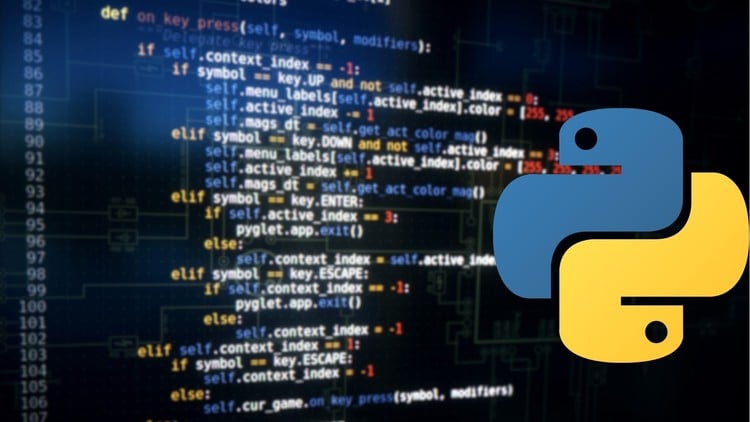
A Comprehensive and Practical Hands-On Guide to Learning Python for Beginners, Aspiring Developers, Self-Learners, etc.
⏱️ Length: 9.3 total hours
⭐ 4.31/5 rating
👥 32,878 students
🔄 January 2024 update
Add-On Information:
Note➛ Make sure your 𝐔𝐝𝐞𝐦𝐲 cart has only this course you're going to enroll it now, Remove all other courses from the 𝐔𝐝𝐞𝐦𝐲 cart before Enrolling!
- Course Overview
- Embark on a dynamic learning journey designed to transform you into a proficient Python user for data science, starting from the very basics and progressively building towards advanced applications.
- Understand why Python stands as the undisputed lingua franca of data science, leveraging its powerful libraries and extensive community support for impactful analysis.
- Explore the foundational ecosystem of Python, setting the stage for deeper dives into specialized data manipulation, analysis, and visualization techniques.
- Grasp the end-to-end data science workflow, from problem definition and data acquisition to processing, exploration, modeling, and effective communication of insights.
- Uncover Python’s role in automating data-driven tasks, enabling efficient and reproducible research across various industries and domains.
- Learn through a structured, hands-on curriculum that emphasizes practical application, ensuring you can immediately apply concepts to real-world scenarios.
- Discover the power of iterative development and debugging in Python, essential skills for any aspiring data professional tackling complex data challenges.
- Engage with a curriculum continually updated to reflect the latest trends and best practices in the rapidly evolving field of data science, as of January 2024.
- Requirements / Prerequisites
- A desktop or laptop computer with a stable internet connection is necessary to follow along with installations and coding exercises.
- Basic computer literacy, including navigating file systems, managing applications, and performing general system operations.
- No prior programming experience or data science background is assumed, making this course accessible to absolute beginners.
- A genuine enthusiasm for problem-solving and a willingness to dedicate time to practice the concepts taught through the assignments.
- Skills Covered / Tools Used
- Jupyter Notebooks: Master this indispensable web-based interactive computing environment for writing, running, and sharing live code, equations, visualizations, and narrative text.
- NumPy for Numerical Computing: Harness the core library for scientific computing in Python, excelling in array operations, mathematical functions, and efficient numerical data handling.
- Pandas for Data Manipulation: Become proficient in using DataFrames and Series for robust data cleaning, transformation, merging, filtering, and aggregation of complex datasets.
- Exploratory Data Analysis (EDA): Develop skills in systematically examining datasets to discover patterns, spot anomalies, test hypotheses, and extract meaningful insights, primarily with Pandas.
- Data Visualization with Matplotlib: Create a wide array of static, interactive, and animated visualizations, including line plots, scatter plots, bar charts, and histograms to communicate data insights effectively.
- Advanced Visualization with Seaborn: Leverage Seaborn to produce aesthetically pleasing and informative statistical graphics, simplifying complex visualizations like heatmaps, pair plots, and distribution plots.
- Introduction to Statistical Concepts: Apply Python to calculate descriptive statistics, understand distributions, and perform basic inferential statistical tests to draw conclusions from data.
- File I/O and Data Ingestion: Learn to read and write various data formats, including CSV, Excel, JSON, and potentially SQL databases, to bring data into your Python environment for analysis.
- Error Handling and Debugging: Implement robust error handling techniques using
try-exceptblocks and effectively debug Python scripts to ensure reliable code execution. - Object-Oriented Programming (OOP) Fundamentals: Gain an introductory understanding of classes and objects, enabling you to write more modular, reusable, and scalable Python code.
- Version Control Basics (Conceptual): Understand the importance of version control systems like Git in collaborative data science projects, even if not directly implementing it in every assignment.
- Performance Optimization (Conceptual): Learn strategies for writing efficient Python code for data processing, including vectorization and avoiding common performance pitfalls.
- Benefits / Outcomes
- Confidently navigate and manipulate diverse datasets, preparing them for analysis and modeling using industry-standard Python libraries.
- Generate compelling data visualizations that effectively communicate complex findings to both technical and non-technical audiences.
- Develop a strong analytical mindset, enabling you to approach data challenges systematically and derive actionable insights.
- Build a solid portfolio of hands-on data science projects, showcasing your ability to apply Python to solve real-world problems.
- Lay a robust foundation for pursuing more advanced topics in machine learning, artificial intelligence, deep learning, and big data analytics.
- Enhance your problem-solving capabilities, logical thinking, and computational skills, valuable in any technology-driven career path.
- Open doors to entry-level data analyst, data science intern, or Python developer roles in various sectors, equipped with practical, in-demand skills.
- Become a self-sufficient learner, capable of exploring new Python libraries and data science methodologies independently after course completion.
- PROS
- Highly practical and hands-on, featuring assignments that solidify learning through direct application.
- Structured for beginners, ensuring a smooth and comprehensible learning curve without prior programming knowledge.
- Comprehensive coverage of essential Python libraries crucial for data science, beyond just language fundamentals.
- Benefit from a large student community and high rating, indicating a proven track record of student satisfaction and effective teaching.
- Regularly updated content (January 2024 update) ensures relevance with the latest tools and practices in the field.
- The concise 9.3-hour length makes it an accessible option for those with limited time, offering significant learning in a focused period.
- CONS
- Mastery of data science concepts and Python programming requires consistent practice and engagement beyond the course material, demanding significant time commitment from the learner.
Learning Tracks: English,Development,Programming Languages
Found It Free? Share It Fast!